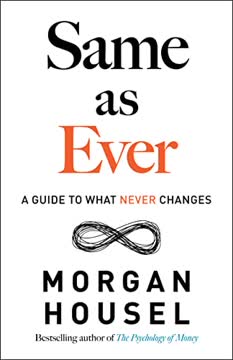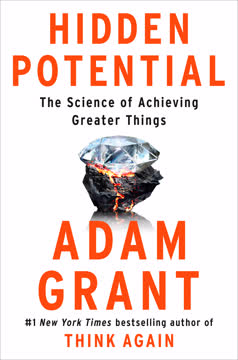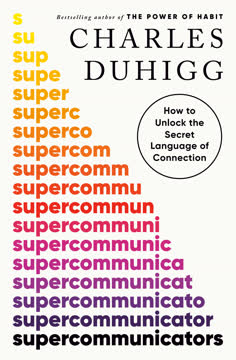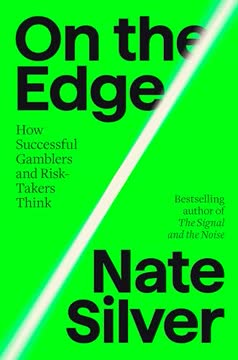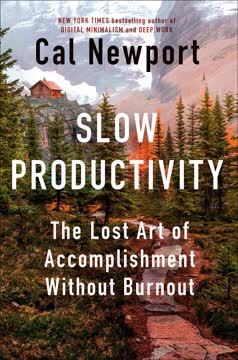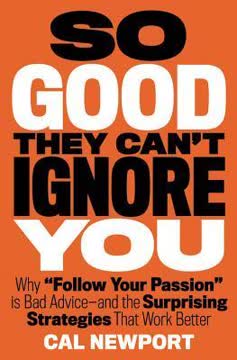つの重要なポイント
1. スロー・プロダクティビティ:意義ある仕事のための新しい哲学
スロー・プロダクティビティは、絶え間ない緊急性のパフォーマティブな報酬を断固として拒否する。
スロー・プロダクティビティの定義。 スロー・プロダクティビティは、少ないことに集中し、自然なペースで働き、品質にこだわる哲学である。これは、知識労働に対するより持続可能で意義のあるアプローチを創出し、絶え間ない忙しさと過負荷の文化に対抗することを目的としている。
歴史的背景。 この概念は、科学者や芸術家のような伝統的な知識労働者からインスピレーションを得ている。彼らはしばしば、よりゆっくりとした多様なペースで働いていた。例としては以下が挙げられる:
- アイザック・ニュートンが『プリンキピア』のアイデアを20年かけて発展させたこと
- ジョージア・オキーフがレイク・ジョージでの生産的な夏を過ごしたこと
- ジョン・マクフィーの長編ジャーナリズムへの緻密なアプローチ
スロー・プロダクティビティの利点:
- バーンアウトとストレスの軽減
- 創造性と革新性の向上
- 高品質な成果物
- 持続可能な長期的なキャリア
2. 知識労働における疑似プロダクティビティの興隆と衰退
知識労働において、新たなコミットメントを引き受けると、それが小さなタスクであれ大きなプロジェクトであれ、一定の管理オーバーヘッドが伴う。
疑似プロダクティビティの起源。 知識労働が20世紀半ばに登場した際、マネージャーは生産性を測定するのに苦労した。これにより、目に見える活動が有用性の代替指標として使用され、絶え間ない忙しさの文化が生まれた。
オーバーヘッド税の問題。 新しいタスクやプロジェクトごとに、メールや会議などの管理オーバーヘッドが追加される。作業量が増えると、このオーバーヘッドが作業日の大部分を占めるようになり、意義のある仕事に費やす時間がほとんどなくなる。
技術の役割。 ネットワーク化されたコンピュータやメール、Slackのようなコミュニケーションツールの導入により、この問題は増幅され、常に「忙しい」状態を維持することが可能になったが、必ずしも生産的であるとは限らない。
3. 少ないことを行う:本当に重要なことに集中する
質を求めるには、ペースを落とす必要がある。
集中の力。 少ないが重要なタスクに集中することで、より深い関与と高品質な成果物が得られる。このアプローチは以下の例で示されている:
- アンドリュー・ワイルズがフェルマーの最終定理を解くことに専念したこと
- ジェーン・オースティンがチャウトン・コテージでの生産的な期間を過ごしたこと
少ないことを行うための戦略:
- ミッションを制限する:2〜3つの主要なプロフェッショナルゴールに集中する
- プロジェクトを制限する:タイムブロッキングを使用して作業量を管理する
- 日々の目標を制限する:1日に1つの主要なプロジェクトに取り組む
- 逆タスクリストを使用する:他人があなたの公開リストにタスクを追加するようにする
利点:
- ストレスと圧倒感の軽減
- 集中力と生産性の向上
- 高品質な仕事
4. 自然なペースで働く:季節性と変動を受け入れる
仕事は常に増え続ける。努力を生活の一部として尊重し、息抜きを与えるべきであり、生活の障害としないようにする。
仕事の自然なリズム。 歴史を通じて、仕事には季節に結びついた自然な起伏があった。現代の知識労働はこの変動を失い、バーンアウトと創造性の低下を招いている。
自然なペースを保つための戦略:
- 重要なプロジェクトに時間をかける
- 仕事の年間に「スローシーズン」を導入する
- 儀式を使用して精神的なシフトを作り出す
- 日中や週の中で仕事の強度を変える
季節性の利点:
- 創造性と問題解決能力の向上
- バーンアウトとストレスの軽減
- 持続可能な長期的な生産性
5. 質にこだわる:自分と自分の能力に賭ける
短期的な機会を逃しても、成果の質にこだわる。これらの結果の価値を活用して、長期的に努力の自由を増やす。
質をレバレッジとして活用する。 高品質な仕事を生み出すことに焦点を当てることで、キャリアにおける自律性と自由が増す。例としては以下が挙げられる:
- ジュエルが100万ドルの契約金を断り、自分の技術を磨くことに専念したこと
- ポール・ジャービスが自分のスキルを活用して柔軟でストレスの少ないライフスタイルを築いたこと
質を向上させるための戦略:
- 自分の分野の「シネフィル」になる:関連する分野のマスターを研究する
- 自分の「インクリングス」を始める:相互批評と改善のためのグループを形成する
- 質の高いツールと環境に投資する
利点:
- キャリアの機会の増加
- 仕事に対する自律性とコントロールの向上
- より意義深く満足のいくプロフェッショナルライフ
6. 小さなタスクを抑える:気を散らすタスクを制御する戦略
タスクを抑えることは、小さなことから逃げることではない。むしろ、これらの努力をできるだけ苦痛なく行うことにある。
小さなタスクの問題。 小さな義務が積み重なり、重要な仕事への集中を妨げることがある。
小さなタスクを抑えるための戦略:
- タスクを自動化する:定期的なタスクのためのスケジュールを作成する
- 同期する:オフィスアワーやドケットクリアリングミーティングを利用する
- 他人にもっと働かせる:逆タスクリストを実施する
- タスクエンジンを避ける:小さなタスクを生み出さないプロジェクトを選ぶ
- お金を使う:管理作業を減らすためにツールやサービスに投資する
利点:
- 重要な仕事に費やす時間と精神的エネルギーの増加
- ストレスと圧倒感の軽減
- 全体的な生産性の向上
7. 創造性を高める詩的な作業環境を作る
奇妙なものは強力である、たとえそれが醜くても。
環境の力。 仕事の物理的および精神的なコンテキストは、創造性と生産性に大きな影響を与える。
インスピレーションを与える作業空間を作るための戦略:
- スペースを仕事に合わせる:環境を目標に合わせる
- 奇妙なものを受け入れる:非凡な空間が創造性を刺激する
- 印象的な儀式を使用する:精神状態を変える儀式を作り出す
例:
- ピーター・ベンチリーが『ジョーズ』を炉修理工場で執筆したこと
- マヤ・アンジェロウが執筆のためにホテルの部屋を借りたこと
- ジョージア・オキーフがレイク・ジョージでの生産的な夏を過ごしたこと
8. 質を活用して自由と自律性を得る
質にこだわることは、1967年のビートルズのように、EMIスタジオに入り、シタールやマルチトラックテープマシンでどれだけ時間をかけても実験できるようになることだ。
質をキャリア資本として活用する。 珍しく価値のあるスキルを開発することで、より良い労働条件や自律性を交渉するためのレバレッジが得られる。
例:
- ビートルズが『サージェント・ペパーズ・ロンリー・ハーツ・クラブ・バンド』で実験する自由を得たこと
- ポール・ジャービスがウェブデザインのスキルを活用して柔軟なライフスタイルを築いたこと
- アラニス・モリセットが『ジャグド・リトル・ピル』で芸術的なリスクを取ったこと
質を活用するための戦略:
- 自分に賭ける:自分の能力を示すために計算されたリスクを取る
- 給与を減らす:長期的なスキル開発のために即時の収入を犠牲にする
- スケジュールを発表する:社会的なプレッシャーを利用して高品質な仕事を促進する
9. 完璧主義とバランスを取って最適な結果を得る
重要なのは進歩であり、完璧ではない。
完璧主義の罠。 質にこだわることは重要だが、無限の修正に陥らないようにすることも大切である。
完璧主義とバランスを取るための戦略:
- 時間制限を設定する:質を追求するのに十分な時間を与えるが、無制限の時間は与えない
- 進歩に焦点を当てる:単一の傑作を作るのではなく、分野や会話を進展させることを目指す
- フィードバックループを使用する:定期的に作品を共有して入力を得て、勢いを維持する
例:
- ビートルズが『サージェント・ペパーズ』で実験と締め切りのバランスを取ったこと
- リン=マニュエル・ミランダが『イン・ザ・ハイツ』の反復的な開発を行ったこと
利点:
- 高品質な仕事の一貫した成果
- 創造的な麻痺を避ける
- 長期プロジェクトでの勢いを維持する
最終更新日:
FAQ
What's Slow Productivity about?
- Sustainable Work Focus: Slow Productivity by Cal Newport emphasizes a sustainable approach to work, advocating for balance between productivity and well-being.
- Critique of Busyness: The book critiques the modern culture of busyness and pseudo-productivity, which prioritizes visible activity over meaningful work.
- Core Principles: Newport introduces three principles: do fewer things, work at a natural pace, and obsess over quality, aiming to reshape professional life.
- Practical Strategies: It offers actionable advice to help knowledge workers escape the cycle of pseudo-productivity and find fulfillment.
Why should I read Slow Productivity by Cal Newport?
- Addressing Burnout: If you're overwhelmed by work demands, this book offers a refreshing perspective on achieving results without sacrificing well-being.
- Enhance Work Quality: It encourages focusing on the quality of work rather than quantity, leading to more meaningful outcomes and professional satisfaction.
- Cultural Shift: Newport promotes a cultural shift in defining productivity, advocating for a humane and thoughtful approach to work.
- Applicable Across Fields: The strategies are relevant for various professional settings, from freelancers to corporate employees.
What are the key takeaways of Slow Productivity by Cal Newport?
- Do Fewer Things: Focus on a limited number of important projects to enhance quality and reduce overwhelm, leading to more meaningful accomplishments.
- Work at a Natural Pace: Allow work to unfold at a sustainable speed, incorporating breaks and varied intensity levels to promote deeper engagement.
- Obsess Over Quality: Prioritize the quality of work over the quantity of tasks completed, encouraging a mindset shift towards impactful work.
- Practical Implementation: Newport provides strategies like scheduling slow seasons and simplifying daily schedules to maintain a natural work pace.
What is pseudo-productivity, as defined in Slow Productivity?
- Visible Activity Proxy: Pseudo-productivity is the use of visible activity as a proxy for actual productive effort, equating busyness with effectiveness.
- Negative Consequences: This mindset leads to burnout and a lack of meaningful output, trapping individuals in a cycle of constant activity.
- Cultural Critique: Newport critiques this approach, suggesting it undermines true productivity, which should focus on quality and meaningful contributions.
- Shift in Focus: The book encourages shifting focus from mere visibility to genuine accomplishment and well-being.
What are the three principles of slow productivity in Slow Productivity?
- Do Fewer Things: Reduce obligations to focus on what truly matters, allowing for deeper engagement and better results.
- Work at a Natural Pace: Adopt a work rhythm that varies in intensity, allowing for rest and reflection to enhance creativity and productivity.
- Obsess Over Quality: Emphasize producing high-quality work rather than simply completing tasks, fostering pride and accomplishment.
- Holistic Approach: These principles collectively aim to create a more sustainable and fulfilling work life.
How can I implement the principle of "do fewer things" from Slow Productivity?
- Limit Commitments: Reduce obligations to a manageable level, focusing on key projects that align with your goals to avoid overwhelm.
- Prioritize Important Tasks: Identify impactful tasks and dedicate time and energy to them, allowing for deeper focus and better outcomes.
- Use a Holding Tank: Maintain a list of potential projects to pull from when you have capacity, managing workload and staying organized.
- Strategic Focus: This approach helps streamline efforts and enhance the quality of work.
What does Newport mean by "work at a natural pace" in Slow Productivity?
- Avoiding Rush: Resist the urge to rush through tasks, allowing work to unfold at a sustainable and manageable pace.
- Embracing Variation: Incorporate periods of intense focus followed by breaks or lighter work, mirroring natural life rhythms.
- Long-Term Perspective: Appreciate the value of taking time to develop ideas and projects, leading to more meaningful outcomes.
- Balanced Approach: This principle promotes a healthier work-life balance and enhances creativity.
What is the definition of "quiet quitting" in Slow Productivity?
- Control Over Workload: Quiet quitting involves disengaging from hustle culture by doing only what is required, setting boundaries at work.
- Seasonal Approach: Newport suggests using quiet quitting as a tactic to implement seasonality in work, recharging during specific seasons.
- Psychological Benefits: Many report improvements in mental health and work-life balance by reducing the pressure to be constantly available.
- Reclaiming Time: This practice allows individuals to reclaim their time and energy for personal projects and well-being.
What are some practical strategies from Slow Productivity by Cal Newport?
- Schedule Slow Seasons: Plan specific times of the year to slow down work pace, focusing on low-impact tasks during off-seasons.
- Implement "No Meeting Mondays": Designate one day a week free from meetings to create uninterrupted time for important projects.
- Pair Work with Rest Projects: After major work projects, schedule time for leisure or personal projects to maintain motivation and prevent burnout.
- Balanced Work Life: These strategies help create a sustainable work environment that fosters creativity and reduces burnout.
What are the best quotes from Slow Productivity and what do they mean?
- "Your worth as a person is not defined by your labor.": Encourages seeking fulfillment beyond professional achievements, emphasizing personal value.
- "Hardwood grows slowly.": Reflects the idea that quality work takes time and patience, prioritizing depth and craftsmanship over speed.
- "If you collect modest drops of meaningful effort for 365 days, you’ll end the year with a bucket that’s pretty damn full.": Illustrates the cumulative effect of consistent, focused work, emphasizing small, intentional efforts leading to significant accomplishments.
- Core Messages: These quotes encapsulate the book's core messages about redefining productivity and valuing meaningful contributions.
How does Slow Productivity address the issue of burnout?
- Critique of Modern Work Culture: Newport identifies pseudo-productivity pressures as a primary driver of burnout, arguing constant visible activity is unsustainable.
- Promoting Sustainable Practices: Advocates for a slower, more intentional work approach, focusing on fewer tasks and allowing for natural pacing.
- Encouraging Reflection and Rest: Emphasizes the importance of breaks and varied work intensity to rejuvenate individuals and enhance productivity.
- Long-Term Solutions: The book suggests a fundamental shift in viewing productivity to create a healthier relationship with work.
How can I implement the principles of Slow Productivity in my daily life?
- Start Small: Begin by applying one or two principles, such as reducing projects or scheduling regular breaks, and gradually incorporate more strategies.
- Create a Supportive Environment: Align workspace and routines with slow productivity principles, like decluttering and setting work hour boundaries.
- Reflect and Adjust: Regularly assess progress and make adjustments, experimenting with different strategies to find what works best for you.
- Personalized Approach: Slow productivity is about finding a balance that suits your individual needs and work style.
レビュー
本書『スロー・プロダクティビティ』は賛否両論を受けている。ニューポートの質重視の仕事や自然なペースに関する洞察を評価し、刺激的で実用的だと感じる人もいる。一方で、古いアイデアの焼き直しで一貫性に欠け、逸話が多すぎると批判する声もある。多くのレビュアーは、特に自律性の低い労働者にとっては実用的ではないと指摘している。ニューポートの原則に価値を見いだす人もいるが、内容はもっと短くまとめられるべきだと感じる人もいる。全体として、本書の有用性と関連性については意見が分かれている。
Similar Books
